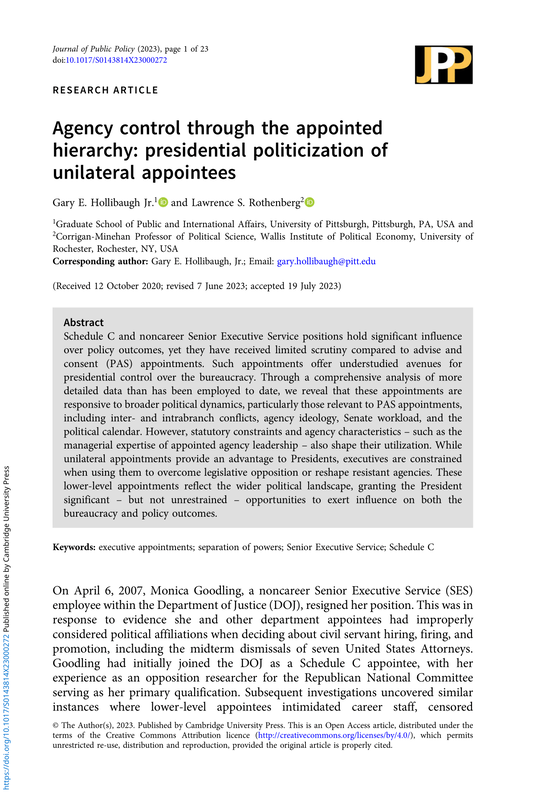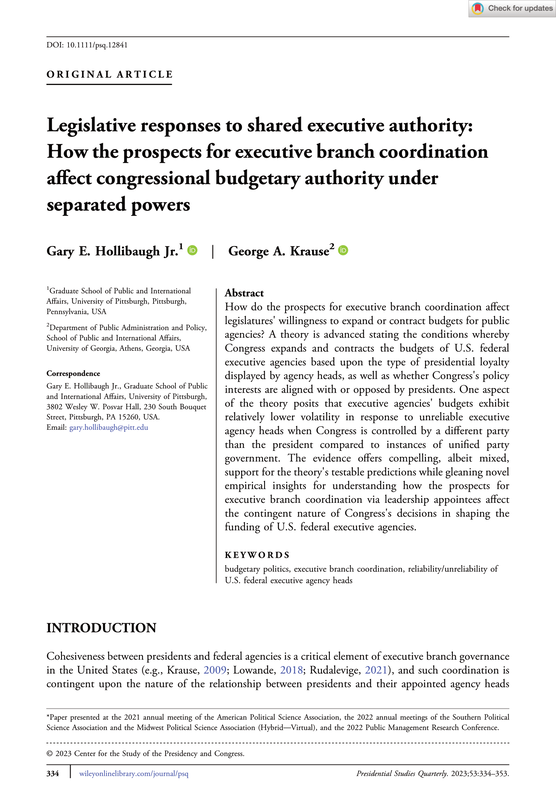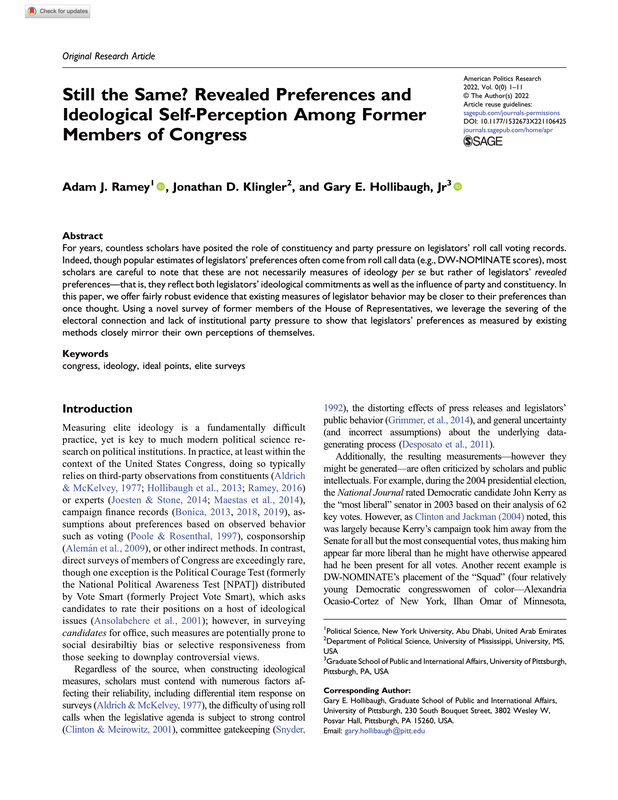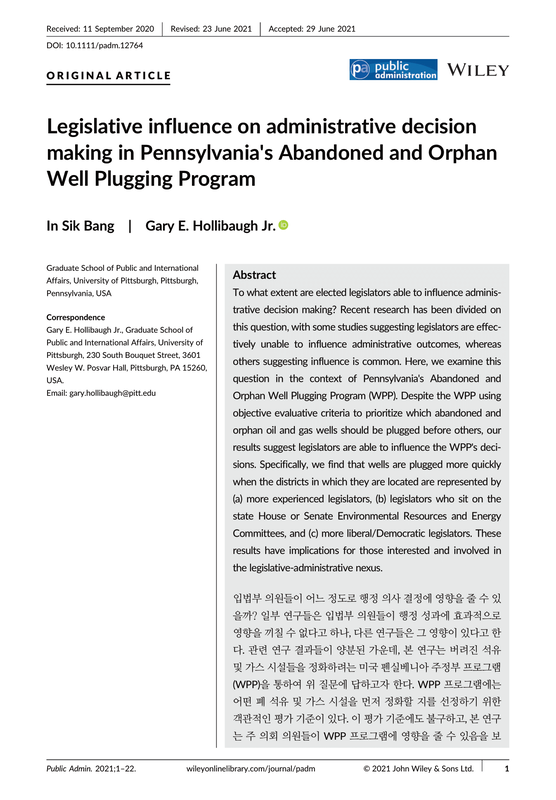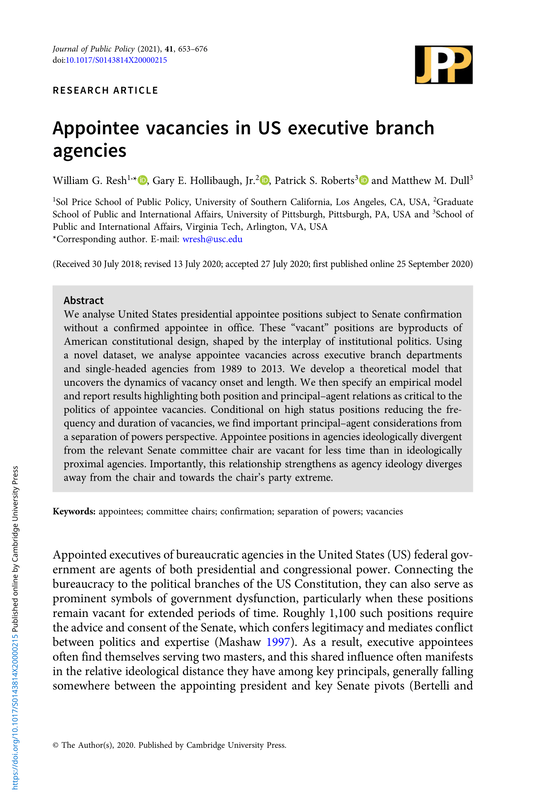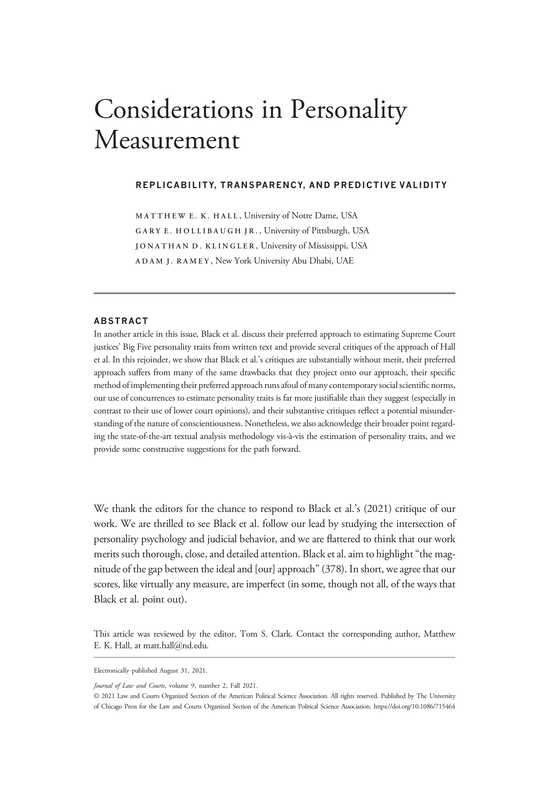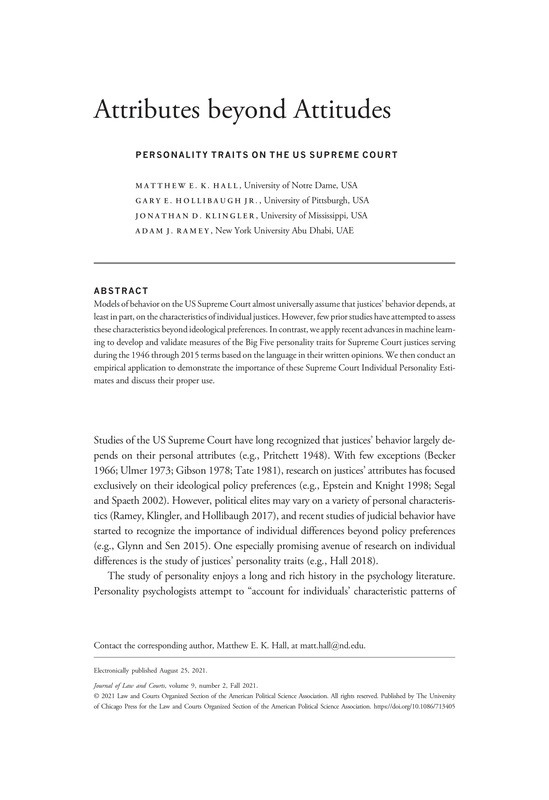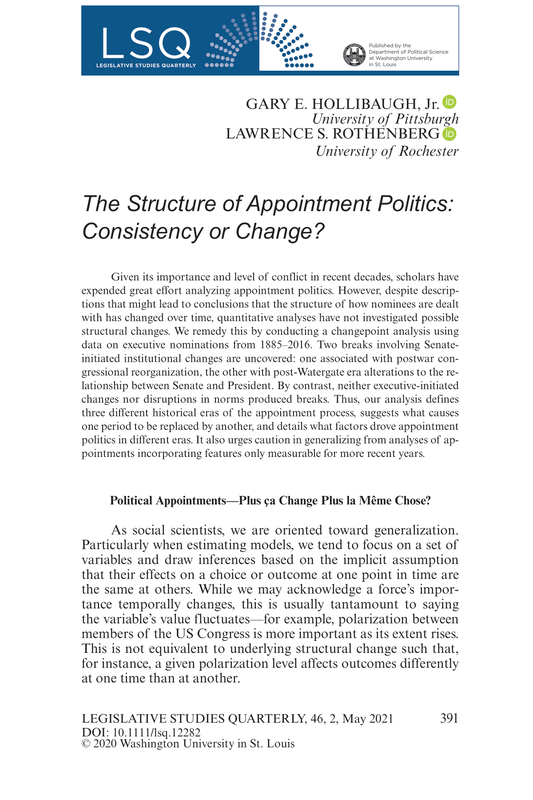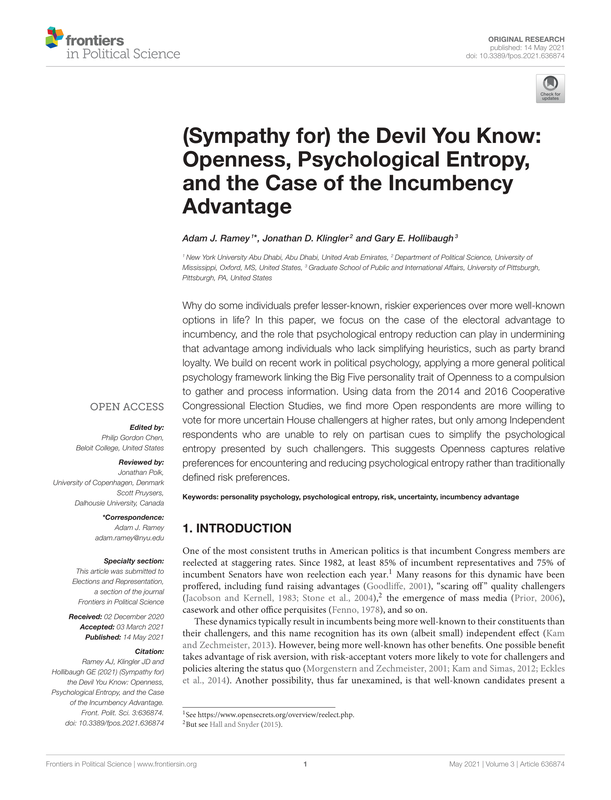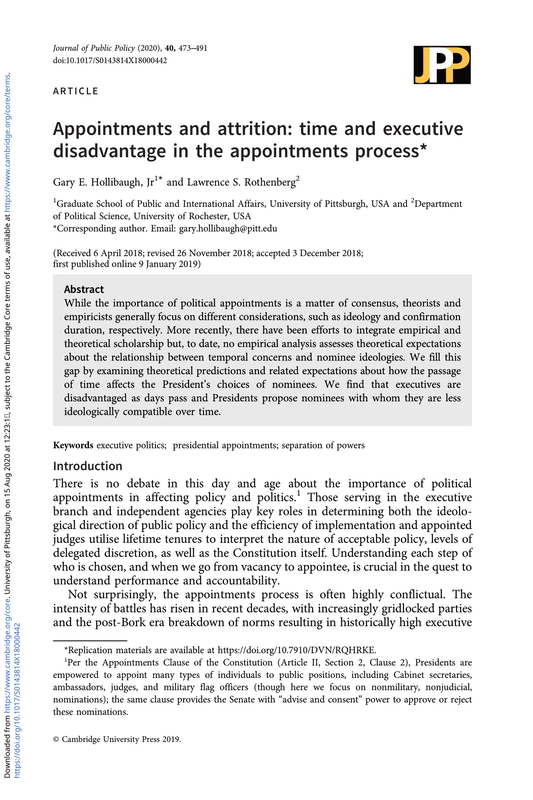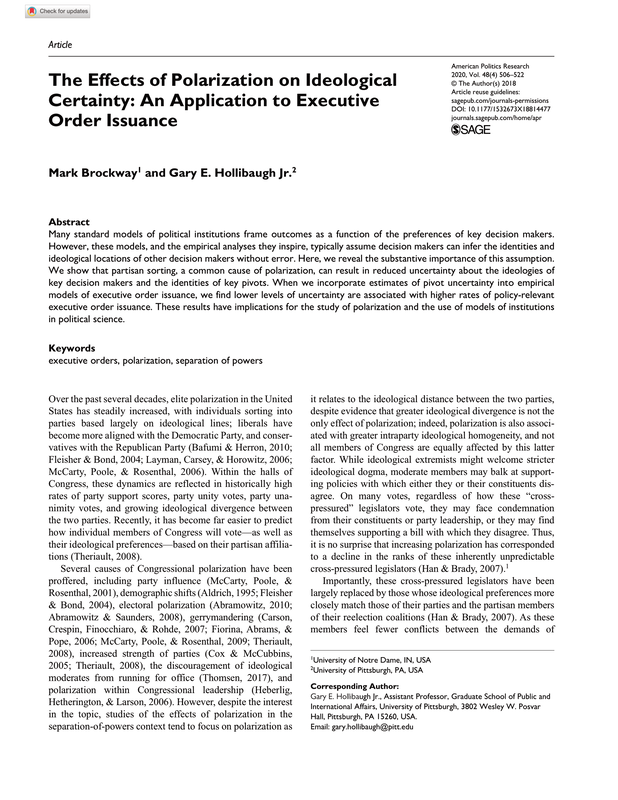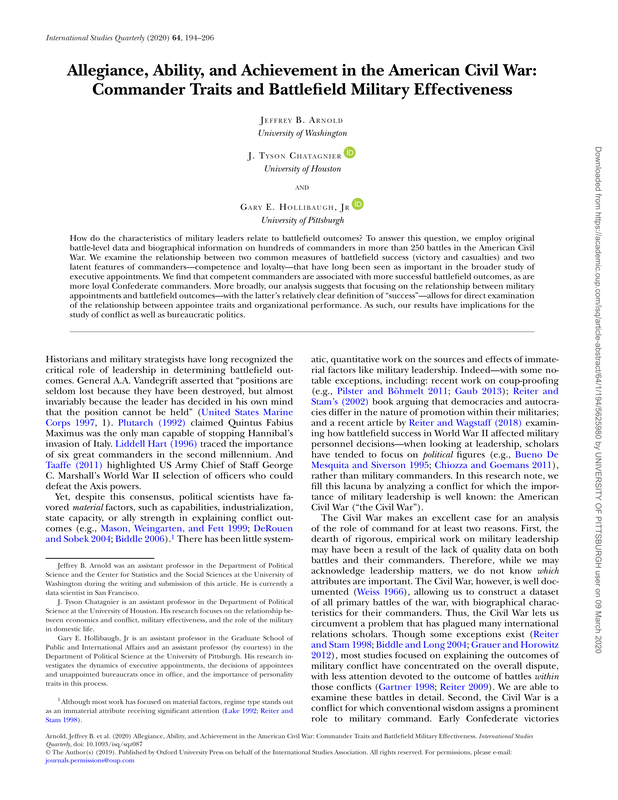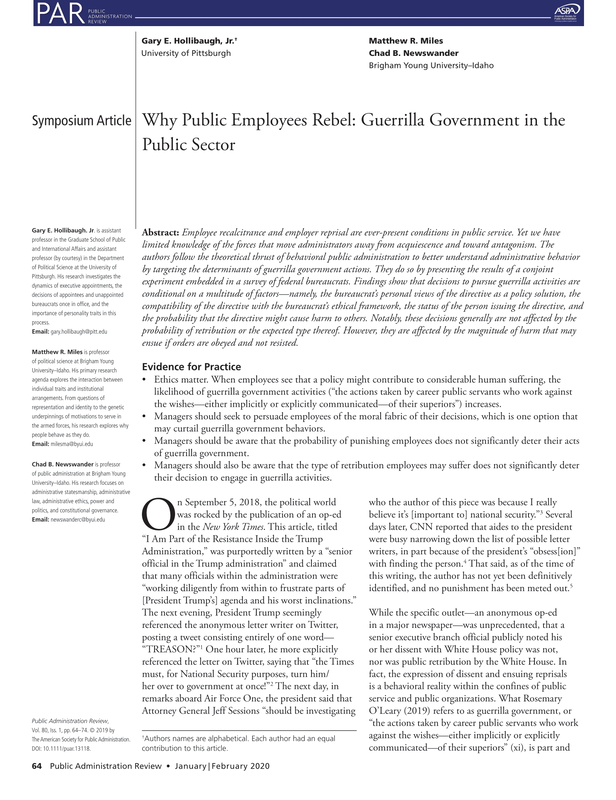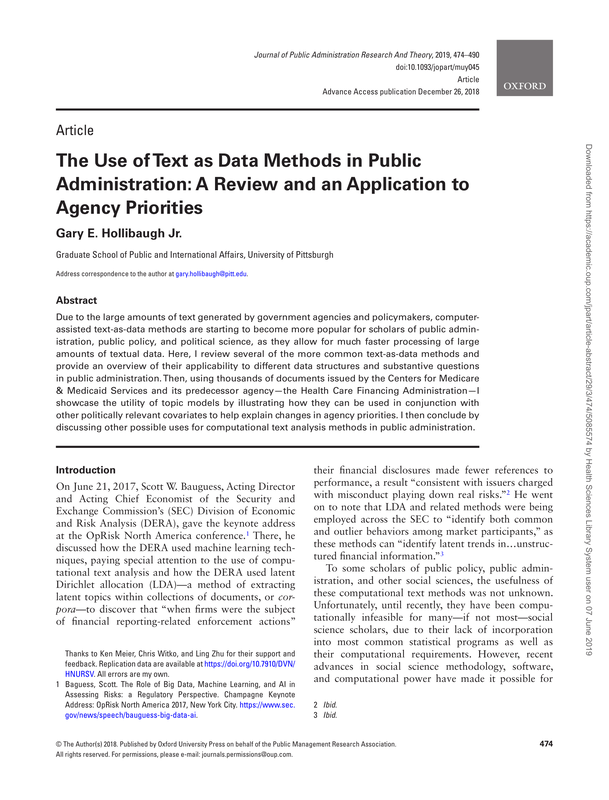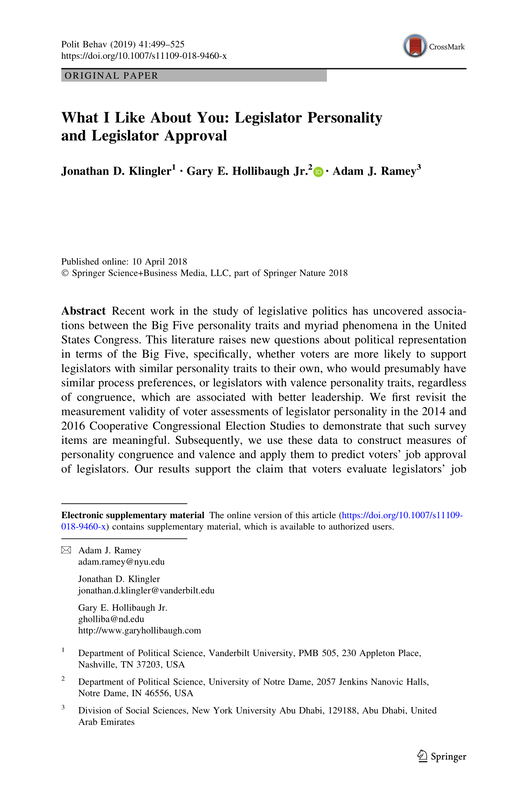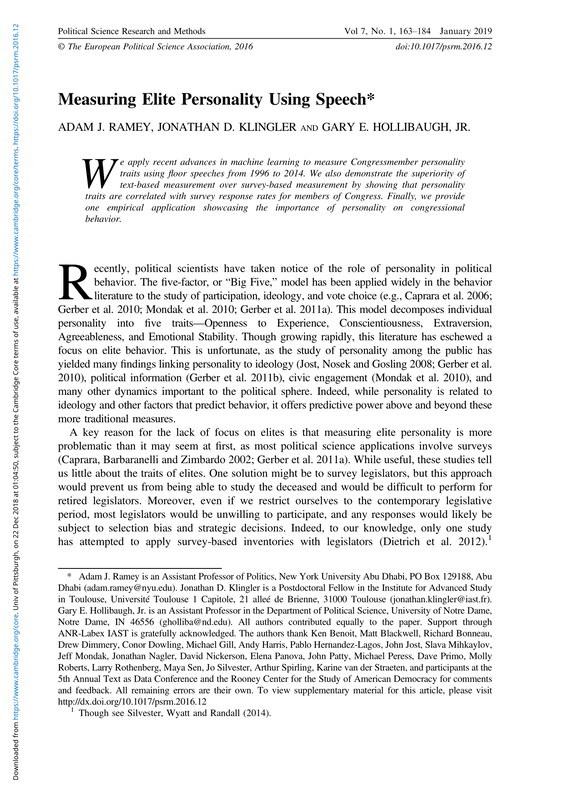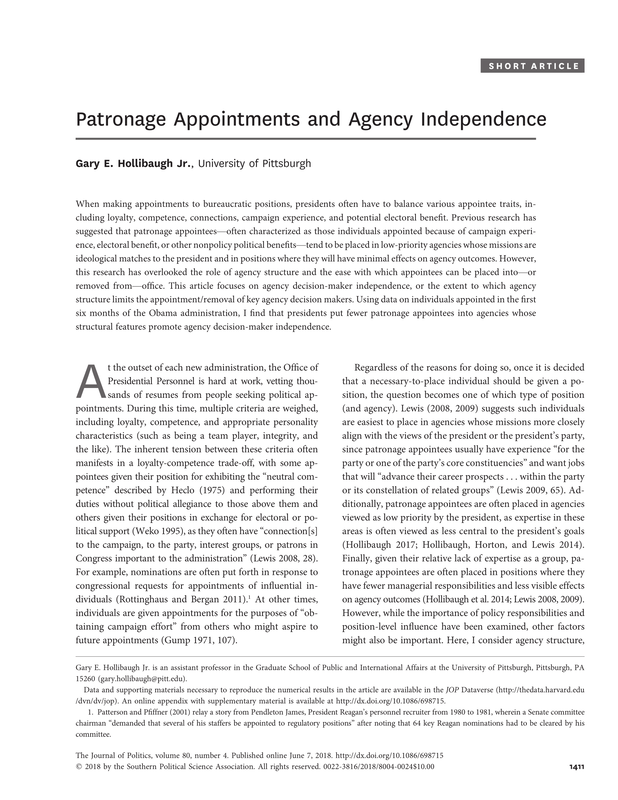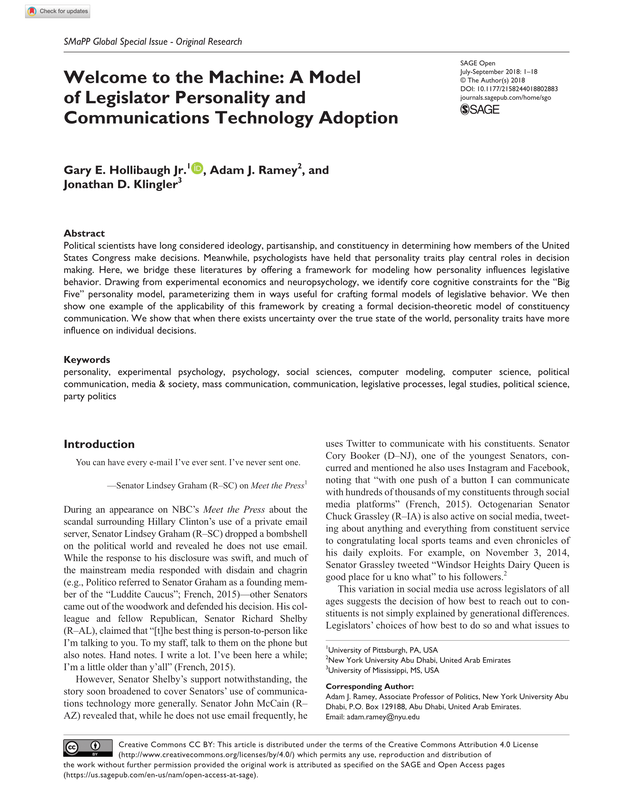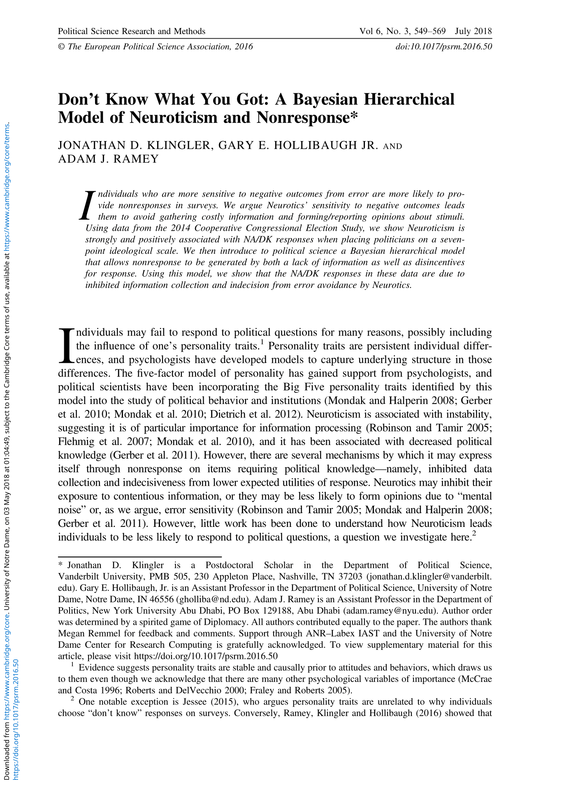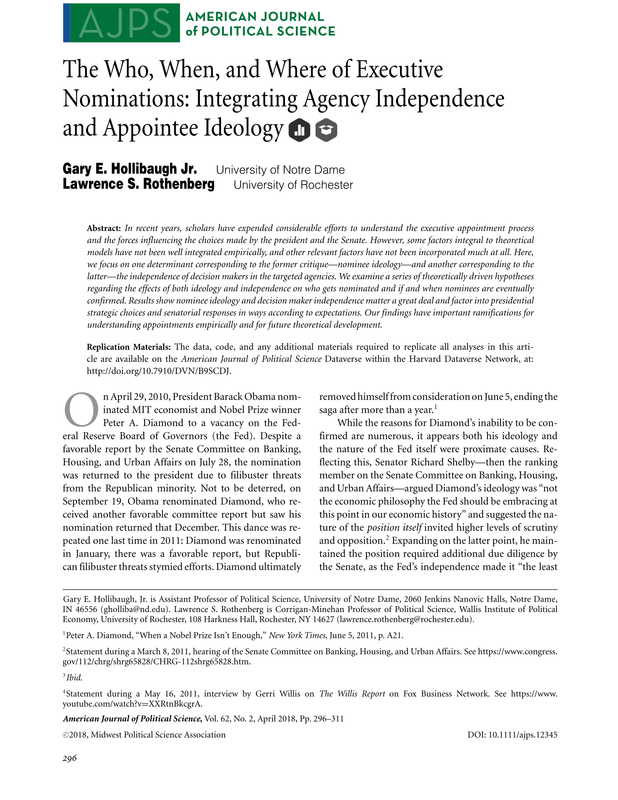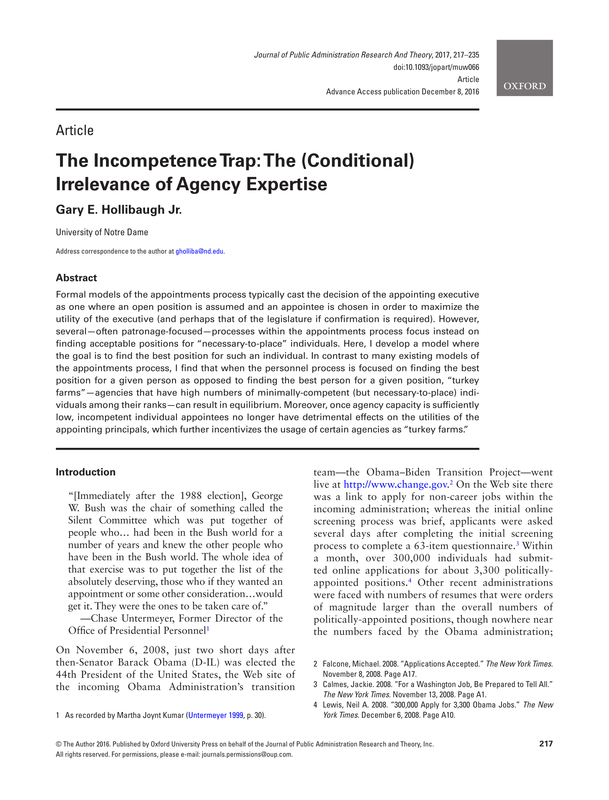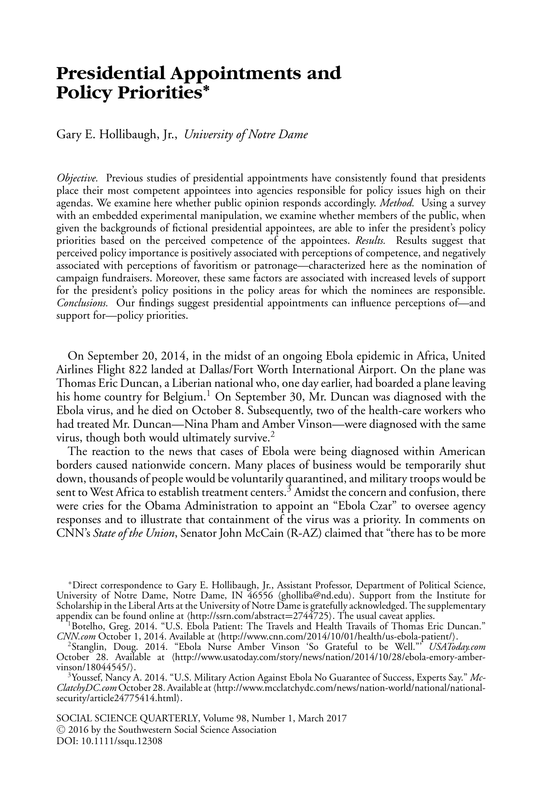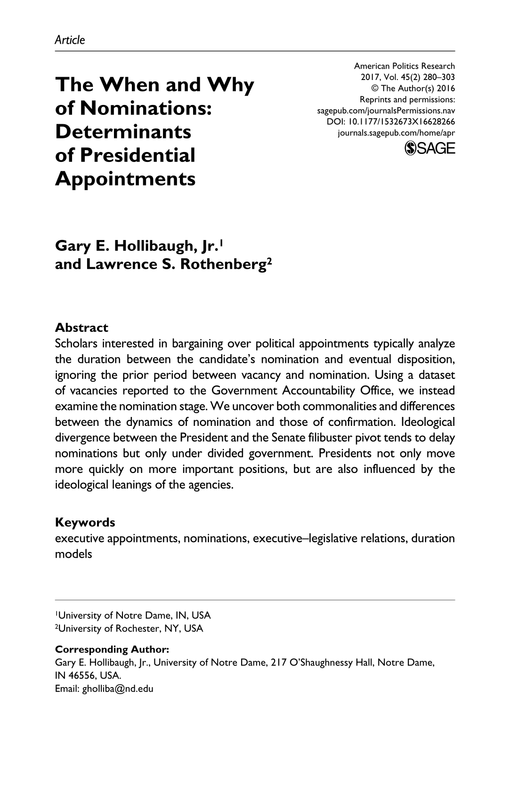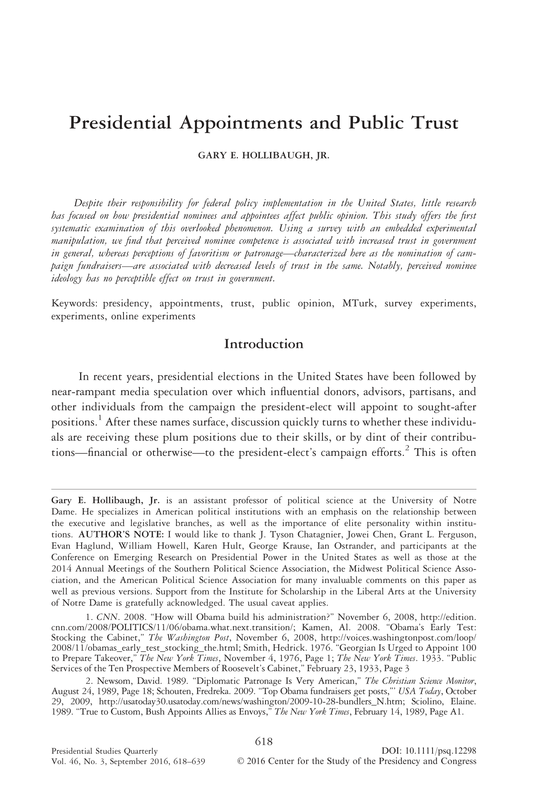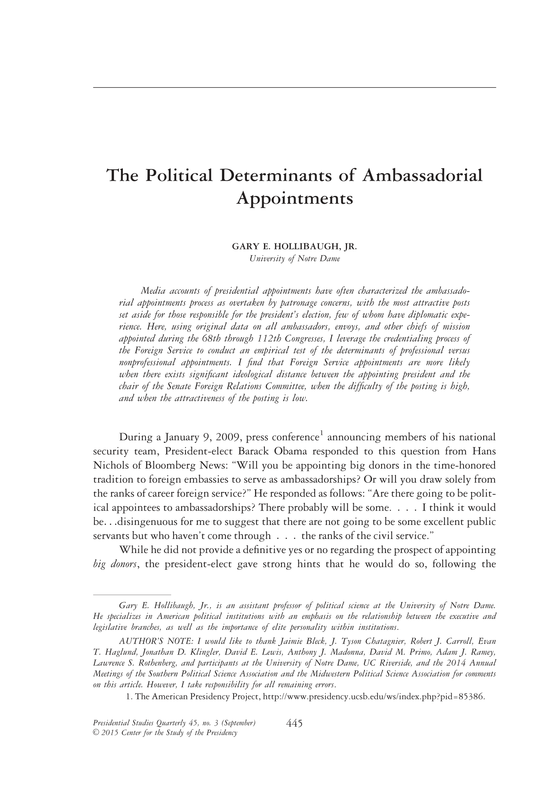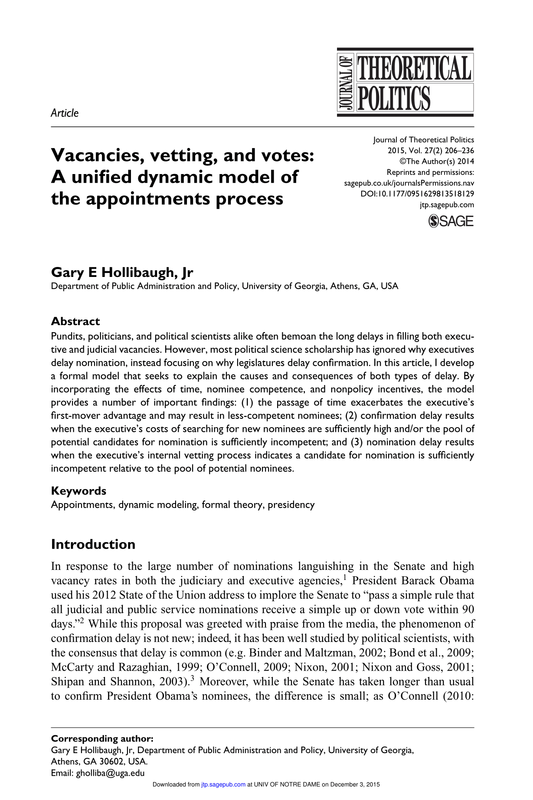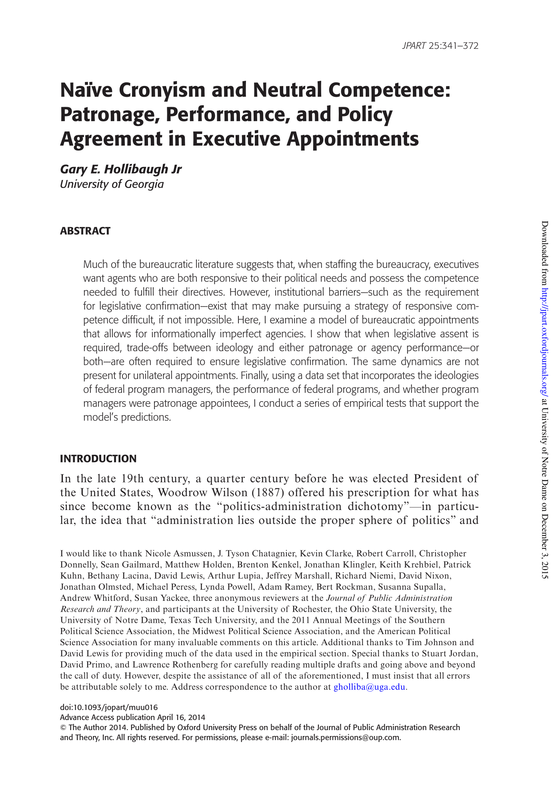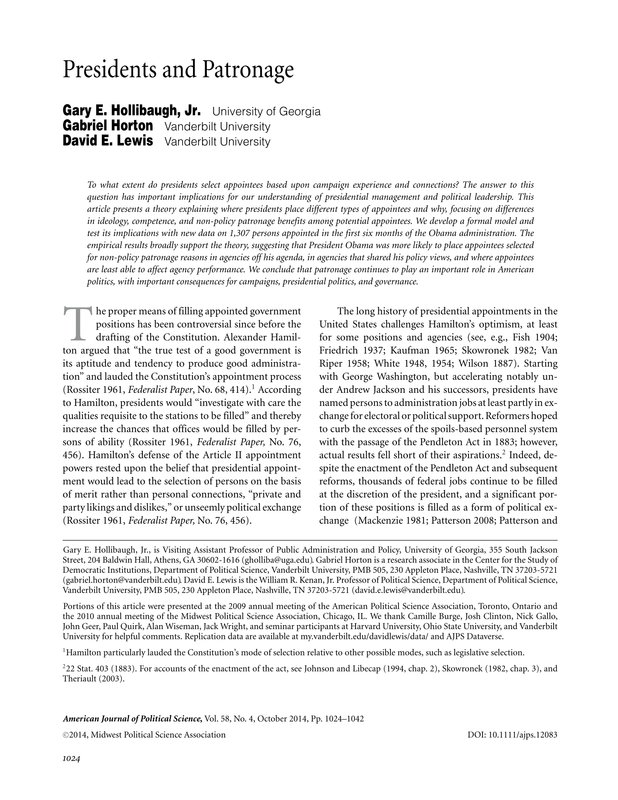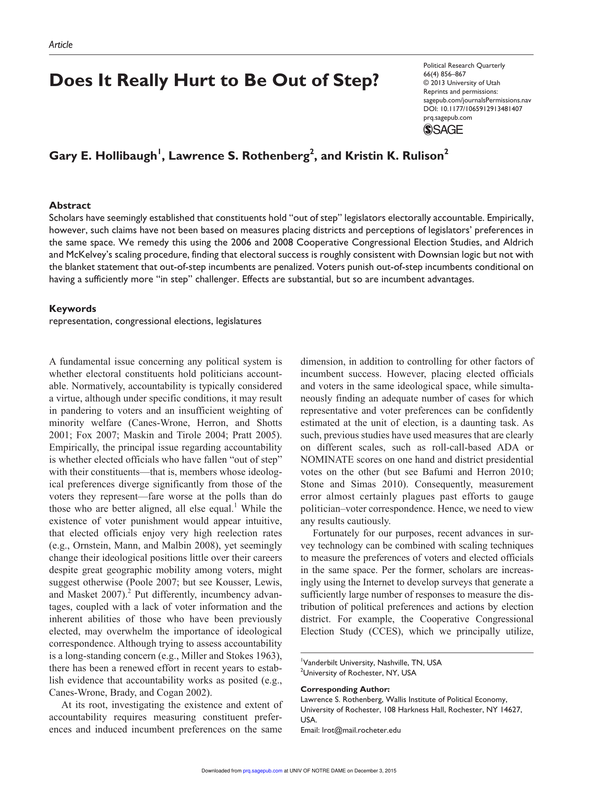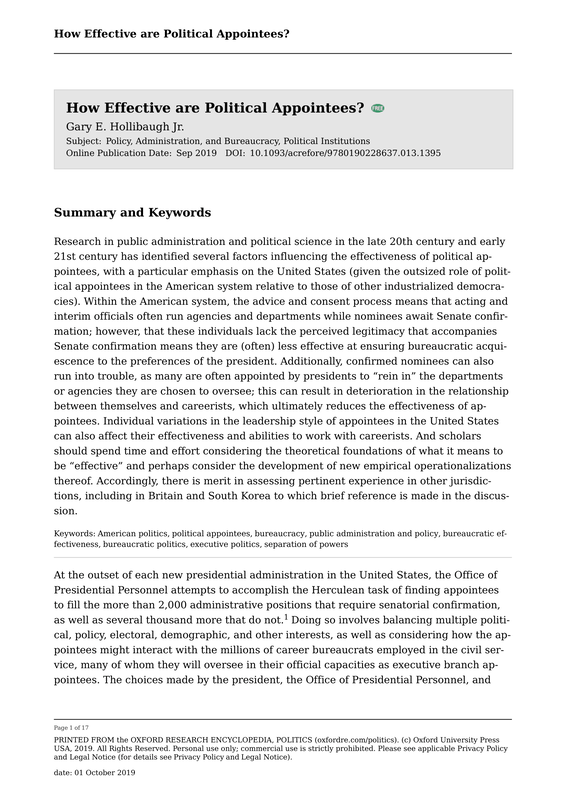Book
|
More than a Feeling: Personality, Polarization, and the Transformation of the U.S. Congress. 2017. University of Chicago Press. (With Jonathan D. Klingler and Adam J. Ramey)
- Reviewed in Congress & the Presidency - Reviewed in Perspectives on Politics Whatever you think about the widening divide between Democrats and Republicans, ideological differences do not explain why politicians from the same parties, who share the same goals and policy preferences, often argue fiercely about how best to attain them. This perplexing misalignment suggests that we are missing an important piece of the puzzle. Political scientists have increasingly drawn on the relationship between voters’ personalities and political orientation, but there has been little empirically grounded research looking at how legislators’ personalities influence their performance on Capitol Hill. With More than a Feeling, my coauthors (Adam J. Ramey and Jonathan D. Klingler) and I have developed an innovative framework incorporating what are known as the Big Five dimensions of personality—openness to experience, conscientiousness, extraversion, agreeableness, and neuroticism—to improve our understanding of political behavior among members of Congress. To determine how strongly individuals display these traits, we identified correlates across a wealth of data, including speeches, campaign contributions and expenditures, committee involvement, willingness to filibuster, and even Twitter feeds. We then show how we might expect to see the influence of these traits across all aspects of Congress members’ political behavior—from the type and quantity of legislation they sponsor and their style of communication to whether they decide to run again or seek a higher office. We also argue convincingly that the types of personalities that have come to dominate Capitol Hill in recent years may be contributing to a lot of the gridlock and frustration plaguing the American political system. |
Journal Articles
|
"Agency Control through the Appointed Hierarchy: Presidential Politicization of Unilateral Appointees." Accepted. Journal of Public Policy. (With Lawrence S. Rothenberg)
Schedule C and noncareer Senior Executive Service positions hold significant influence over policy outcomes, yet they have received limited scrutiny compared to advise and consent (PAS) appointments. Such appointments offer understudied avenues for presidential control over the bureaucracy. Through a comprehensive analysis of more detailed data than has been employed to date, we reveal that these appointments are responsive to broader political dynamics, particularly those relevant to PAS appointments, including inter- and intrabranch conflicts, agency ideology, Senate workload, and the political calendar. However, statutory constraints and agency characteristics--such as the managerial expertise of appointed agency leadership--also shape their utilization. While unilateral appointments provide an advantage to Presidents, executives are constrained when using them to overcome legislative opposition or reshape resistant agencies. These lower-level appointments reflect the wider political landscape, granting the President significant--but not unrestrained--opportunities to exert influence on both the bureaucracy and policy outcomes. |
|
"Legislative Responses to Shared Executive Authority: How Executive Branch Coordination Affects Congressional Budgetary Authority under Separated Powers." 2023. Presidential Studies Quarterly 53(3):334-353. (With George A. Krause)
How do the prospects for executive branch coordination affect legislatures' willingness to expand or contract budgets for public agencies? A theory is advanced stating the conditions whereby Congress expands and contracts the budgets of U.S. federal executive agencies based upon the type of presidential loyalty displayed by agency heads, as well as whether Congress's policy interests are aligned with or opposed by presidents. One aspect of the theory posits that executive agencies' budgets exhibit relatively lower volatility in response to unreliable executive agency heads when Congress is controlled by a different party than the president compared to instances of unified party government. The evidence offers compelling, albeit mixed, support for the theory's testable predictions while gleaning novel empirical insights for understanding how the prospects for executive branch coordination via leadership appointees affect the contingent nature of Congress's decisions in shaping the funding of U.S. federal executive agencies. |
|
"Still the Same? Revealed Preferences and Ideological Self-Perception Among Former Members of Congress." 2022. American Politics Research. 50(6):781-791. (With Jonathan D. Klingler and Adam J. Ramey)
For years, countless scholars have posited the role of constituency and party pressure on legislators’ roll call voting records. Indeed, though popular estimates of legislators’ preferences come from roll call data (e.g., DW-NOMINATE scores), most scholars are careful to note that these are not necessarily measures of ideology per se but rather of legislators’ revealed preferences—that is, they reflect both legislators’ ideological commitments as well as the influence of party and constituency. In this paper, we offer fairly robust evidence that existing measures of legislator behavior may be closer to their preferences than once thought. Using a novel survey of former members of the House of Representatives, we leverage the severing of the electoral connection and lack of institutional party pressure to show that legislators’ preferences as measured by existing methods closely mirror their own perceptions of themselves. |
|
"Legislative Influence on Administrative Decisionmaking in Pennsylvania's Abandoned and Orphan Well Plugging Program." 2022. Public Administration. 100(3):737-758. (With In Sik Bang)
To what extent are elected legislators able to influence administrative decisionmaking? Recent research has been divided on this question, with some studies suggesting legislators are effectively unable to influence administrative outcomes, whereas others suggest influence is common. Here, we examine this question in the context of Pennsylvania’s Abandoned and Orphan Well Plugging Program (WPP). Despite the WPP using objective evaluative criteria to prioritize which abandoned and orphan oil and gas wells should be plugged before others, our results suggest legislators are able to influence the WPP’s decisions. Specifically, we find that wells are plugged more quickly when the districts in which they are located are represented by (a) more experienced legislators, (b) legislators who sit on the state House or Senate Environmental Resources & Energy Committees, and (c) more liberal/Democratic legislators. These results have implications for those interested and involved in the legislative-administrative nexus. |
|
"Appointee Vacancies in US Executive Branch Agencies." 2021. Journal of Public Policy 41(4):653-676. (With Matthew Dull, William G. Resh, and Patrick S. Roberts)
We analyze appointee positions subject to Senate-confirmation without a confirmed appointee in office. These “vacant” appointee positions are byproducts of American constitutional design, shaped by the interplay of institutional politics and agency administration. We analyze position vacancies across 416 president-appointed, Senate-confirmed (PAS) positions in executive branch departments and single-headed agencies during the George H.W. Bush, William J. Clinton, George W. Bush, and Barack H. Obama presidential administrations, between January 1989 and January 2014. We develop a theoretical model in order to uncover the dynamics of vacancy onset and vacancy length. We then specify empirical models and report results highlighting three themes in appointee politics: position, timing, and principal-agent relations. We find high-status PAS positions reduce the frequency and duration of appointee vacancies. We also find that principal-agent considerations are important from the Senate’s perspective, as PAS positions in agencies that are ideologically opposed to the Senate majority are less likely to be vacant. |
|
"Considerations in Personality Measurement: Replicability, Transparency, and Predictive Validity." 2021. Journal of Law and Courts 9(2):397-405 (With Matthew E. K. Hall, Jonathan D. Klingler, and Adam J. Ramey)
In another article in this issue, Black et al. (2021) discuss their preferred approach to estimating Supreme Court justices' Big Five personality traits from written text and provide several critiques of Hall et al.'s (2021) approach. In this rejoinder, we show that their critiques are substantially without merit, their preferred approach suffers from many of the same drawbacks that they project onto our approach, their specific method of implementing their preferred approach runs afoul of many contemporary social scientific norms, our use of concurrences to estimate personality traits is far more justifiable than they suggest (especially in contrast to their use of lower court opinions), and their substantive critiques reflect a potential misunderstanding of the nature of conscientiousness. Nonetheless, we also acknowledge their broader point regarding the state of the art textual analysis methodology vis-à-vis the estimation of personality traits, and we provide some constructive suggestions for the path forward. |
|
"Attributes Beyond Attitudes: Measuring Personality Traits on the U.S. Supreme Court." 2021. Journal of Law and Courts 9(2):345-369. (With Matthew E. K. Hall, Jonathan D. Klingler, and Adam J. Ramey)
Models of behavior on the U.S. Supreme Court almost universally assume that the justices’ behavior depends on the characteristics of the individual justices. However, few prior studies have attempted to measure the justices’ individual characteristics beyond their ideological preferences. In contrast, we apply recent advances in machine learning to measure the “Big Five” personality traits of U.S. Supreme Court justices serving during the 1946 through 2015 terms based on the language in their written opinions. We then conduct an empirical application to demonstrate the importance of these Supreme Court Individual Personality Estimates (SCIPEs) in predicting the justices’ behaviors. |
|
"The Structure of Appointment Politics: Consistency or Change?" 2021. Legislative Studies Quarterly 46(2):391-426. (With Lawrence S. Rothenberg)
Given its importance and level of conflict in the last several decades, scholars have expended great effort analyzing appointment politics. However, despite verbal descriptions that might lead to conclusions that the structure of how nominees are dealt with has changed over time—although with no definitive breakpoints—quantitative analyses have not investigated possible structural change. We remedy this by conducting a changepoint analysis using data on executive nominations from 1885-2016. Two structural breaks involving changes initiated by the Senate are uncovered: one associated with post-World War II congressional reorganization designed to make the legislature a more equal partner with the executive, the other with post-Watergate era alterations to the relationship between Senate and President. By contrast, neither executive initiated changes nor different norms governing the confirmation process produced such breaks. Thus, our analysis defines three different historical eras of the appointment process, suggests what causes one period to be replaced by another, and details what factors drove appointment politics in these different times. It also suggests caution in generalizing from analyses of appointments incorporating features, such as ideology, that are only measurable for more recent years. |
|
"(Sympathy for) The Devil You Know? Openness, Psychological Entropy, and the Incumbency Advantage." 2021. Frontiers in Political Science 3:636784. (With Jonathan D. Klingler and Adam J. Ramey)
Why do some individuals prefer lesser-known, riskier experiences over more well-known options in life? In this paper, we focus on the case of the electoral advantage to incumbency, and the role that psychological entropy reduction can play in undermining that advantage among individuals who lack simplifying heuristics, such as party brand loyalty. We build on recent work in political psychology, applying a more general political psychology framework linking the Big Five personality trait of Openness to a compulsion to gather and process information. Using data from the 2014 and 2016 Cooperative Congressional Election Studies, we find more Open respondents are more willing to vote for more uncertain House challengers at higher rates, but only among Independent respondents who are unable to rely on partisan cues to simplify the psychological entropy presented by such challengers. This suggests Openness captures relative preferences for encountering and reducing psychological entropy rather than traditionally defined risk preferences. |
|
"Appointments and Attrition: Time and Executive Disadvantage in the Appointments Process." 2020. Journal of Public Policy 40(3): 473-491. (With Lawrence S. Rothenberg)
While the importance of political appointments is a matter of popular and scholarly consensus, theorists and empiricists have tended to focus on different considerations, such as ideology and confirmation duration respectively. More recently, there have been efforts to integrate empirical and theoretical scholarship but, to date, no empirical analysis assesses theoretical expectations about the relationship between temporal concerns and nominee ideologies. We fill this gap by examining theoretical predictions and related expectations about the role of time, especially how its passage affects the President’s ideological choices of nominees. Contrary to expectations, we find executives are disadvantaged as days pass—whether time is measured by the period since vacancy onset or after a Congress begins—and Presidents propose nominees with whom they are less ideologically compatible over time. Our analysis indicates theorists may need to adjust their models, such as by assuming Presidents discount the future more steeply than Senators. |
|
"The Effects of Polarization on Ideological Certainty: An Application to Executive Order Issuance." 2020. American Politics Research 48(4): 506-522. (With Mark D. Brockway)
Many standard models of political institutions frame outcomes as a function of the preferences of key decision-makers. However, these models, and the empirical analyses they inspire, typically assume that decision-makers can infer the identities and ideological locations of decision-makers without error. Here, we reveal the substantive importance of this assumption. We show that partisan sorting, a common cause of polarization, can result in reduced uncertainty about the ideologies of key decision-makers and the identities of key pivots. When we incorporate estimates of uncertainty into empirical models of executive order issuance, we find lower levels of uncertainty are associated with higher rates of policy-relevant executive order issuance. These results have implications for the study of polarization and the use of models of institutions in political science. |
|
"Allegiance, Ability, and Achievement in the American Civil War: Commander Traits and Battlefield Military Effectiveness." 2020. International Studies Quarterly 64(1): 194-206. (With Jeffrey B. Arnold and J. Tyson Chatagnier)
We investigate the role of leadership in the outcome of militarized conflict. Specifically, we examine whether commanding officers systematically affected the outcome of battles during the American Civil War. Using battle-level data and biographical information about hundreds of leaders on both sides, we determine whether different commanders can produce different outcomes, and which attributes of military leaders are most closely associated with battlefield success. Our analysis suggests higher-quality leaders do generate better outcomes on the battlefield, whereas the effects of loyalty are mixed. These results have implications for the study of conflict as well as bureaucratic politics. |
|
"Why Public Employees Rebel: Guerrilla Government in the Public Sector." 2020. Public Administration Review 80(1): 64-74. (With Matthew R. Miles and Chad B. Newswander)
Employee recalcitrance and employer reprisal are ever-present conditions in public service. Yet, we have limited knowledge that discloses the forces of what moves administrators away from acquiescence and toward antagonism. Thus, we follow the theoretical thrust of Behavioral Public Administration (BPA) to better understand administrative behavior by targeting the determinants of guerrilla government actions. We do so by presenting the results of a conjoint experiment embedded in a survey of federal bureaucrats. We find that decisions to pursue guerrilla activities are conditional on a multitude of factors—namely the bureaucrat’s personal views of the directive as a policy solution, the compatibility of the directive with the bureaucrat’s ethical framework, the status of the person issuing the directive, and the probability that the directive might cause harm to others. Notably, these decisions generally are not affected by the probability of retribution, or the expected type thereof. But they are affected by the magnitude of harm that may ensue if orders are obeyed and not resisted. |
|
"The Use of Text as Data Methods in Public Administration: A Review and an Application to Agency Priorities." 2019. Journal of Public Administration Research and Theory 29(3): 474-490.
Due to the large amounts of text generated by government agencies and policymakers, computer-assisted text-as-data methods are starting to become more popular for scholars of public administration, public policy, and political science, as they allow for much faster processing of large amounts of textual data. Here, I review several of the more common text-as-data methods and provide an overview of their applicability to different data structures and substantive questions in public administration. Then, using thousands of documents issued by the Centers for Medicare & Medicaid Services and its predecessor agency—the Health Care Financing Administration—I showcase the utility of topic models by illustrating how they can be used in conjunction with other politically-relevant covariates to help explain changes in agency priorities. I then conclude by discussing other possible uses for computational text analysis methods in public administration. |
|
"What I Like About You: Legislator Personality and Legislator Approval." 2019. Political Behavior 41(2): 499-525. (With Jonathan D. Klingler and Adam J. Ramey)
Recent work in the study of legislative politics has applied the Five Factor Model of personality traits to investigate myriad phenomena in the United States Congress. This literature raises questions about the Big Five personality traits and political representation, specifically, whether voters are more likely to support legislators with similar personality traits to their own, or legislators with valence personality traits, regardless of congruence. Using data from the 2014 and 2016 Cooperative Congressional Election Studies, we predict voters' job approval of legislators using measures of personality congruence and personality valence. Our results support personality valence over personality congruence as a determinant of job approval. |
|
"Measuring Elite Personality Using Speech." 2019. Political Science Research and Methods 7(1): 163-184. (With Jonathan D. Klingler and Adam J. Ramey)
We apply recent advances in machine learning to measure Congressmember personality traits using floor speeches from 1996-2014. We also demonstrate the superiority of text-based measurement over survey-based measurement by showing that personality traits are correlated with survey response rates for members of Congress. Finally, we provide one empirical application showcasing the importance of personality on Congressional behavior.
| |||
|
"Patronage Appointments and Agency Independence." 2018. Journal of Politics 80(4): 1411-1416.
When making appointments to bureaucratic positions, Presidents often have to balance various appointee traits, including loyalty, competence, connections, campaign experience, and potential electoral benefit. Previous research has suggested that patronage appointees--often characterized as those individuals appointed because of campaign experience, electoral benefit, or other non-policy political benefits--tend to be placed in low-priority agencies whose missions are ideological matches to the President and in positions where they will have minimal effects on agency outcomes. However, this research has overlooked the role of agency structure and the ease with which appointees can be placed into--or removed from--office. This article focuses on agency decision-maker independence, or the extent to which agency structure limits the appointment/removal of key agency decision makers. Using data on individuals appointed in the first six months of the Obama administration, I find that Presidents put fewer patronage appointees into agencies whose structural features promote agency decision-maker independence. |
|
"Welcome to the Machine: A Model of Legislator Personality and Communications Technology Adoption." 2018. SAGE Open 8(3): 2158244018802883. (With Jonathan D. Klingler and Adam J. Ramey)
Political scientists have long considered ideology, partisanship, and constituency in determining how members of the United States Congress make decisions. Meanwhile, psychologists have held that personality traits play central roles in decision-making. Here, we bridge these literatures by offering a framework for modeling how personality influences legislative behavior. Drawing from experimental economics and neuropsychology, we identify core cognitive constraints for the “Big Five” personality model, parameterizing them in ways useful for crafting formal models of legislative behavior. We then show one example of the applicability of this framework by creating a formal decision-theoretic model of constituency communication. We show that when there exists uncertainty over the true state of the world, personality traits have more influence on individual decisions. |
|
"Don't Know What You Got: A Bayesian Hierarchical Model of Neuroticism and Nonresponse." 2018. Political Science Research and Methods 6(3): 549-569. (With Jonathan D. Klingler and Adam J. Ramey)
Individuals who are more sensitive to punishment from error are more likely to provide nonresponses in surveys. We argue Neurotics’ sensitivity to punishment leads them to avoid gathering costly information and forming/reporting opinions about stimuli. Using data from the 2014 Cooperative Congressional Election Study, we show Neuroticism is strongly and positively associated with NA/DK responses when placing politicians on a 7-point ideological scale. We then introduce to political science a Bayesian hierarchical model that allows nonresponse to be generated by both a lack of information as well as disincentives for response. Using this model, we show that the NA/DK responses in these data are likely due to inhibited information collection—as opposed to indecision from error avoidance—by Neurotics. |
|
"The Who, When, and Where of Executive Nominations: Integrating Agency Independence and Appointee Ideology." 2018. American Journal of Political Science 62(2): 296-311. (With Lawrence S. Rothenberg)
In recent years, scholars have expended considerable efforts to understand the executive appointment process and the forces influencing the choices made by the President and the Senate. However, some factors integral to theoretical models have not been well-integrated empirically, and other relevant factors have not been incorporated much at all. Here, we focus on one determinant corresponding to the former critique—nominee ideology—and another corresponding to the latter—the independence of decision-makers in the targeted agencies. We examine a series of theoretically-driven hypotheses regarding the effects of both ideology and independence on who gets nominated and if and when nominees are eventually confirmed. Results show nominee ideology and decision-maker independence matter a great deal and factor into Presidential strategic choices and Senatorial responses in ways according to expectations. Our findings have important ramifications for understanding appointments empirically and for future theoretical development. |
|
"The Incompetence Trap: The (Conditional) Irrelevance of Agency Expertise." 2017. Journal of Public Administration Research and Theory 27(2): 217-235.
Formal models of the appointments process typically cast the decision of the appointing executive as one where an open position is assumed and an appointee is chosen in order to maximize the utility of the executive (and perhaps that of the legislature if confirmation is required). However, several—often patronage-focused—processes within the appointments process focus instead on finding acceptable positions for “necessary-to-place” individuals. Here, I develop a model where the goal is to find the best position for such an individual. In contrast to many existing models of the appointments process, I find that when the personnel process is focused on finding the best position for a given person as opposed to finding the best person for a given position, “turkey farms”—agencies that have high numbers of minimally-competent (but necessary-to-place) individuals among their ranks—can result in equilibrium. Moreover, once agency capacity is sufficiently low, incompetent individual appointees no longer have detrimental effects on the utilities of the appointing principals, which further incentivizes the usage of certain agencies as “turkey farms.” |
|
"Presidential Appointments and Policy Priorities." 2017. Social Science Quarterly 98(1): 162-184.
Previous studies of presidential appointments have consistently found that presidents place their most competent appointees into agencies responsible for policy issues high on their agendas. Using a survey with an embedded experimental manipulation, we examine whether members of the public, when given the backgrounds of fictional presidential appointees, are able to infer the president's policy priorities based on the perceived competence of the appointees. Results suggest that perceived policy importance is positively associated with perceptions of competence, and negatively associated with perceptions of favoritism or patronage--characterized here as the nomination of campaign fundraisers. Moreover, these same factors are associated with increased levels of support for the President's policy positions in the policy areas for which the nominees are responsible. Notably, perceived nominee ideology has no perceptible effect on policy support or perceived policy importance. |
|
"The When and Why of Nominations: Determinants of Presidential Appointments." 2017. American Politics Research 45(2): 280-303. (With Lawrence S. Rothenberg)
Scholars interested in bargaining over political appointments typically analyze the duration between the candidate’s nomination and eventual disposition, ignoring the prior period between vacancy and nomination. Using a dataset of vacancies reported to the Government Accountability Office, we instead examine the nomination stage. We uncover both commonalities and differences between the dynamics of nomination and those of confirmation. Ideological divergence between the President and the Senate filibuster pivot tends to delay nominations, but only under divided government. Presidents move more quickly on more important positions, but are also influenced by the ideological leanings of the agencies. |
|
"Presidential Appointments and Public Trust." 2016. Presidential Studies Quarterly 46(3): 618-639.
Despite their responsibility for federal policy implementation in the United States, little research has focused on how presidential nominees and appointees affect public opinion. This study offers the first systematic examination of this overlooked phenomenon. Using a survey with an embedded experimental manipulation, we find that perceived nominee competence is associated with increased trust in government in general, as well as individual nominees in particular, whereas perceptions of favoritism or patronage—characterized here as the nomination of campaign fundraisers—are associated with decreased levels of trust in the same. Notably, perceived nominee ideology has no perceptible effect on either trust in government or the nominees themselves. |
|
"The Political Determinants of Ambassadorial Appointments." 2015. Presidential Studies Quarterly 45(3): 445-466.
Media accounts of presidential appointments have often characterized the ambassadorial appointments process as overtaken by patronage concerns, with the most attractive posts set aside for those responsible for the president's election, few of whom have diplomatic experience. Here, using original data on all ambassadors, envoys, and other chiefs of mission appointed during the 68th through 112th Congresses, I leverage the credentialing process of the Foreign Service to conduct an empirical test of the determinants of professional versus nonprofessional appointments. I find that Foreign Service appointments are more likely when there exists significant ideological distance between the appointing president and the chair of the Senate Foreign Relations Committee, when the difficulty of the posting is high, and when the attractiveness of the posting is low. |
|
"Vacancies, Vetting, and Votes: A Unified Dynamic Model of the Appointments Process." 2015. Journal of Theoretical Politics 27(2): 206-236.
Pundits, politicians, and political scientists alike often bemoan the long delays in filling both executive and judicial vacancies. However, most political science scholarship has ignored why executives delay nomination, instead focusing on why legislatures delay confirmation. In this article, I develop a formal model that seeks to explain the causes and consequences of both types of delay. By incorporating the effects of time, nominee competence, and nonpolicy incentives, the model provides a number of important findings: (1) The passage of time exacerbates the executive's first-mover advantage and may result in less-competent nominees; (2) Confirmation delay results when the executive's costs of searching for new nominees are sufficiently high and/or the pool of potential candidates for nomination is sufficiently incompetent; and (3) Nomination delay results when the executive's internal vetting process indicates a candidate for nomination is sufficiently incompetent relative to the pool of potential nominees. |
|
"Naïve Cronyism and Neutral Competence: Patronage, Performance, and Policy Agreement in Executive Appointments." 2015. Journal of Public Administration Research and Theory 25(2): 341-372.
- Winner of the 2011 Midwest Political Science Association Latino Caucus Award Much of the bureaucratic literature suggests that, when staffing the bureaucracy, executives want agents who are both responsive to their political needs and possess the competence needed to fulfill their directives. However, institutional barriers—such as the requirement for legislative confirmation—exist that may make pursuing a strategy of responsive competence difficult, if not impossible. Here, I examine a model of bureaucratic appointments that allows for informationally imperfect agencies. I show that when legislative assent is required, tradeoffs between ideology and either patronage or agency performance—or both—are often required to ensure legislative confirmation. The same dynamics are not present for unilateral appointments. Finally, using a dataset that incorporates the ideologies of federal program managers, the performance of federal programs, and whether program managers were patronage appointees, I conduct a series of empirical tests that support the model’s predictions. |
|
"Presidents and Patronage." 2014. American Journal of Political Science 58(4):1024-1042. (With Gabriel Horton and David E. Lewis)
To what extent do presidents select appointees based upon campaign experience and connections? The answer to this question has important implications for our understanding of presidential management and political leadership. This paper presents a theory explaining where presidents place different types of appointees and why, focusing on differences in ideology, competence, and non-policy patronage benefits among potential appointees. We develop a formal model and test its implications with new data on 1,307 persons appointed in the first six months of the Obama Administration. The empirical results broadly support the theory, suggesting that President Obama was more likely to place appointees selected for nonpolicy patronage reasons in agencies off his agenda, in agencies that shared his policy views, and where appointees are least able to affect agency performance. We conclude that patronage continues to play an important role in American politics with important consequences for campaigns, presidential politics, and governance.
| ||||||||||
|
"Does It Really Hurt to Be Out of Step?" 2013. Political Research Quarterly 66(4): 856-867. (With Lawrence S. Rothenberg and Kristin K. Rulison)
Scholars have seemingly established that constituents hold “out of step” legislators electorally accountable. Empirically, however, such claims have not been based on measures placing districts and perceptions of legislators’ preferences in the same space. We remedy this using the 2006 and 2008 Cooperative Congressional Election Studies and Aldrich and McKelvey’s scaling procedure, finding that electoral success is roughly consistent with Downsian logic but not with the blanket statement that out of step incumbents are penalized. Voters punish out of step incumbents conditional on having a sufficiently more “in step” challenger. Effects are substantial, but so are incumbent advantages. Note: There is a typo in the published version that was introduced during the typesetting stage. On page 859, the published version reads \(\beta_d = \frac{Z_{\text{GOPParty, d}} + Z_{\text{DemParty, d}}}{2}\). This should instead read \(\beta_d = \frac{Z_{\text{GOPParty, d}} - Z_{\text{DemParty, d}}}{2}\).
|
Book Chapters
|
"How Effective Are Political Appointees?" 2019. In the Oxford Encyclopedia of Public Administration, eds. B. Guy Peters and Ian Thynne. New York: Oxford University Press.
Research in public administration and political science in the late 20th century and early 21st century has identified several factors influencing the effectiveness of political appointees, with a particular emphasis on the United States (given the outsized role of political appointees in the American system relative to those of other industrialized democracies). Within the American system, the advise and consent process means that acting and interim officials often run agencies and departments while nominees await Senate confirmation; however, that these individuals lack the perceived legitimacy that accompanies Senate confirmation means they are (often) less effective at ensuring bureaucratic acquiescence to the preferences of the President. Additionally, confirmed nominees can also run into trouble, as many are often appointed by Presidents to “rein in” the departments or agencies they are chosen to oversee; this can result in a deterioration in the relationship between themselves and careerists, which ultimately reduces the effectiveness of appointees. Individual variations in the leadership style of appointees in the United States can also affect their effectiveness and abilities to work with careerists. And scholars should spend time and effort considering the theoretical foundations of what it means to be “effective” and perhaps consider the development of new empirical operationalizations thereof. |

